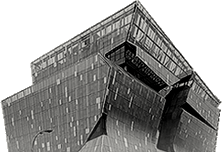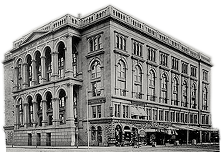Heating, Ventilation, Air Conditioning and Refrigeration
SESSION # 1
Introduction to Air Conditioning
- Definition of air conditioning; principal of Refrigeration; Heat transfer; Principles of latent heat; Thermal body comfort temperature and humidity; Indoor Environmental Health; Comfort Application for Residences, Commercial and Public Buildings
- Refrigeration Cycle; The Carnot Refrigeration Cycle; Single Stage Vapor Compression Refrigeration Cycle; Temperature/Pressure Ratio; Component and Accessories of Refrigeration Cycle; Air Conditioning Cycle Equipment
- British and Metric system units, temperature conversions, Pressure conversion, velocity, volume and time CFM, BTU concepts, ton of refrigeration, motor horsepower, frequency efficiency, RPM calculation, Energy Efficiency Ratio EER, Coefficient of Performance COP
- Introduction to Cooling and Heating Load Estimating; Survey pattern, building size, drawings and blueprints, common symbols, material of construction, infiltration, people occupancy, ventilation, dry bulb, wet bulb, sensible heat, latent heat
SESSION # 2
Refrigerant classifications
- Halocarbon Refrigerant; CFC, HCFC, HFC characteristics, restrictions and alternative to Chlorofluorocarbons (CFC)
- Substitute Refrigerants and Oil, Refrigerant Safety Group
- Clean Air Act, EPA Section 608, Montreal Protocol
- Recovery, Recycle, Reclaim, Recovery-Recycle Machine
- Leak, Leaks detection, Leak Repair
- Refrigerant Charge Manifold Gauge, Charge on the low side of the system; Suction and Discharge Service Valves Position
- Ammonia Refrigerant for HVAC Systems
- Absorption Refrigeration System; Water Lithium Bromide Solution
- Fundamental Absorption Cycles.
- Absorption Operating Equipment: Brine Cooler; Absorber; Generator; Condenser; Heat Exchanger; Evaporator Pump; Solution Pump
SESSION # 3
Refrigeration and Cooling Equipment
- Compressors; Hermetic, Semi- Hermetic, Open Compressors; Reciprocating Compressors; Centrifugal Compressors; Rotary Compressors; Compression Ratio; Capacity Control
- Evaporators; Direct Expansion Evaporators(DX); Air Cooled Evaporators; Flooded Evaporator; Water Cooled Evaporator
- Condenser; Air Cooled Condensers, Propeller and Centrifugal; Evaporative Condensers; Water Cooled Condensers
- Metering Devices; Capillary Tube; Hand Expansion Valve; Thermostatic Expansion Valve TVX, TEV, Type of Equalization; High Side Float HSF; Low Side Float LSF; Solenoid Operated Valves; Safety Relief Valves
- Refrigeration Piping, Valves and Accessories; Piping Principles; Sizing Liquid Lines; Sizing Suction Lines; Sizing Discharge Lines; Refrigeration Valves, Liquid Strainers, Evaporator Pressure Regulators, Fusible Plug, Safety Valves, Solenoid Valves; Liquid Indicator, Filter Dryer, Sight Glass, Oil Separator, Mufflers, Receiver
- Controls High Pressure/High Temperature Refrigerant Controls; High Pressure/High Temperature Oil Controls; Control Safety Devices
SESSION # 4
Air Conditioner Equipment
- Air conditioners and Heat Pumps through-the-wall and window mounted; Package Terminal Air Conditioner (PTAC)
- Central Systems and Equipment; Single Package Self- Contained A/C Units (SPU); SPU Horizontal, SPU floor- mounted unit; Roof Top A/C Units; Split Self- Contained A/C Unit(SU); Air Handling Units
- Ductless A/C Units; Cooling and Heating Solution for Residential and Light Commercial Application, Unit with Multi-Room System; Multi System Indoor Specification
SESSION # 5
Fans and Ventilators
Types of Fans; General Fan Information; Fan Performance, Fan Volume, Fan Outlet Velocity, Fan Velocity, Fan Pressure, Fan Horsepower, Fan Laws; Motor Information; VFD Variable Frequency Drive; Supply and Exhaust systems; Exhaust Fan Balancing; Toilet Exhaust and Kitchen Exhaust
Ducts and Testing, Adjustment, Balancing TAB
- SMACNA – Introduction to Duct Standard
- High Pressure Duct with Pressure 6” to 10” w.g. Class III Fan; Medium Pressure Duct with Pressure 2” to 6” w.g. Class II Fan; Low Pressure Duct with Pressure up to 2” w.g. Class I Fan
- Ducts Shape, Rectangular Ducts, Oval Ducts, Round Ducts; Duct Materials, Metal Duct, Fiberglass Duct, Aluminum Duct ; Duct Fitting; Ducts Sizing, Sheet Metal Thickness, Friction Loss ; Air Pressure in Ducts
- Ducts calculation; High Velocity Ductwork speed over 2,000FPM, Low Velocity Ductwork less 2,000FPM; Determining the Air Quantities; How to use Ductulator; Main Duct, Branch Supply Duct, Return Duct for Commercial, Industrial, Residential Application; Duct Layout
- Duct Insulation; Acoustical Lining; Thermal Insulation
- Air Balance Terms; Air Balance Definition; Air Flow Devices
- Air Distribution Outlets, Supply and Return; Grilles, Perforated Ceiling Panel, Fixed Deflection type Register, Adjustable Deflection type Register, Baseboard Register, Window Slot, Floor Register, Ceiling and Wall Diffuser
- Outlets Sizing, Friction Loss, Outlet Shape: Grill, Register, Diffuser
- Louvers, Dampers, Motorize Dampers, Volume Damper, Zone Damper, Fire Dampers , Combination Smoke/Fire Dampers
- Dual Duct System; VAV Duct Distribution; Air Balancing
- Balance Instrument; TAB Procedure; Pitot Tube, Velometer, Anemometer; Tachometer; Collector Hood
SESSION # 6
Liquid Chillers
- Condenser Air and Water cooled
- Reciprocating Chillers; Centrifugal Chillers; Screw Compressor Chillers
- Chillers configuration: Compressor Assembly, Cooler, Condenser, Float Chambers, Economizer Float Valve, Purge Unit, Relief Valves
- Operation Chiller Control System; Set Point; Safety Controls: High Condenser Pressure, Low Refrigerant Pressure, High Lubricant and Motor Temperature, Low Lubricant Pressure and Temperature, Flow Interlock.
SESSION # 7
Cooling Tower
- Cooling Tower Classification: Natural Draft, Induced Draft, Forced Draft
- Operation, Service and Maintenance; Water Treatment
- Free Cooling; Heat Recovery systems; Energy Cost
Pumps in Chiller- Cooling Tower Application
- Chiller Water Pumps; Condensing Water Pumps; Pump Connection, Valves and Controls, Water Flow Calculation
- Motors, Definitions, Type of Power, Direct Current, Induction and Synchronous Motors, Energy Saving Motor, VFD Motors;
SESSION # 8
Field Trip
The Alstrom Co, Heat Transfer Equipment and System
Overview of Product Line; Alstrom Equipment meets ASME Section VIII Requirements stamps “U”,”R”,”S”,”H” for HVAC; Custom Design for different HVAC Application; Advance Engineering, Unique method of Heat Exchangers Optimization with Maximum Performance Efficiency; Heat Recovery System; Shell and Tube Heat Exchangers; Replacement Tube Bundles; Hot Water Generator; Unfired Clean Steam Generator; Fuel Oil Suction Heater; Heat Exchangers for Highly Viscous Liquids; Liquid/ Vapor Separators, Exhaust Heads; Boiler Room Accessories and Controls
SESSION #9
Hot Water Heating System for HVAC
- Hot Water Heating System (HWHS) Design, HWHS Forced or Hydronic; Gravity, Open Tank Gravity System, Closed Tank Gravity System; Distribution Pipe Configuration, In- Series loop System, One-Pipe and Two-Pipe System
- Elements of Hydronic HWHS, Hot Water Boiler, Heating Circuit Pump, Excess Pressure Control Loop, Expansion Tank, Make-Up Water System, Chemical Water Treatment
- Primary and Secondary Water, Heat Exchanger Plate and Shell and Tube, Heating Terminal Unit, Fan Coil Unit, Convector, Radiator, Air System Coil, Glycol Secondary Circuit, Glycol Pumps, Charging Tank, Expansion Tank, Winterization procedure for HWHS
SESSION # 10
Green Design
- Green Retrofit: Conversion Steam Heating System to Hot Water Heating System; Difference Between Steam and Forced Hot Water Heating System, Distribution Piping, Pumping, Piping Arrangement, Surface Temperature, Maintenance and Repair, Cost Energy Saving Program from NYSEDRA and Con Ed
- Solar Water Heating (SWH), Design requirements, Type of SWH, Direct and Indirect System; Modern Solar Heating System; Economic , Energy Production and Environment System Cost and Payback Period
- Energy Efficiency, Energy Modeling, Green Material, LEED Certification for new Heating, Ventilation, Air Conditioning and Refrigeration Building Systems
- Indoor Environmental Quality; Carbon Monitoring
SESSION # 11
Troubleshooting and Servicing Air Conditioning Equipment
- Inspect, Diagnose and Repair Central Air Conditioning Systems and Heat Pumps
- Troubleshooting of Motors for Compressors and Fans
- Air Filters Effectiveness, HEPA Definitions
- HVAC Service Check List
- A/C Repair, lost Cooling, Insufficient Cooling
- Cleaning Air Conditioning Equipment and Fixing Leaking A/C Refrigerant
- Mold Growth in HVAC Equipment
- Legionella Bacteria and Health Concern
- Safety devices, when you working with HVAC Equipment
SESSION # 12
Building Automation Systems (BAS)
- DDC Direct Digital Control Technology AND Components
- Main Points for Control: Temperature , Air and Water Flows, Pressure and Actuator Positions
- Web Browser Interface and Internet Communications
- Designing Direct Digital Control Systems, Energy Management Systems
- Emergency System Notification on e-mail, Mobile phone or Pager
The Retraining program is made possible through generous donations from the Robin Hood Foundation and Con Edison. The Retraining Program would also like to thank our individual donors for support.





